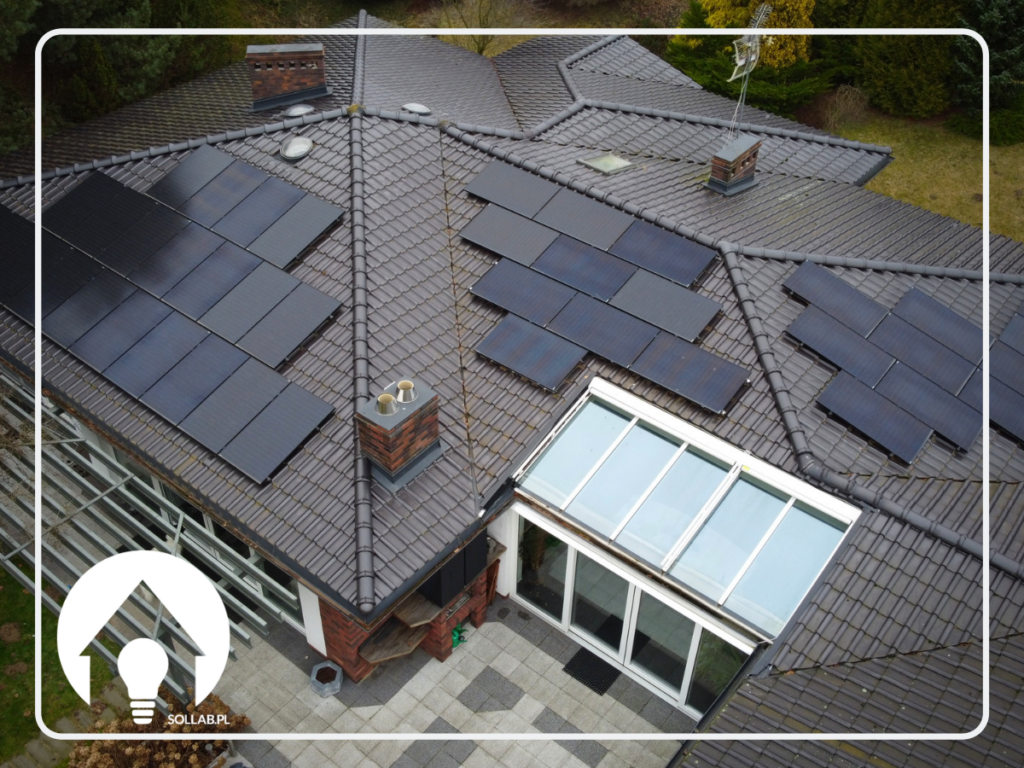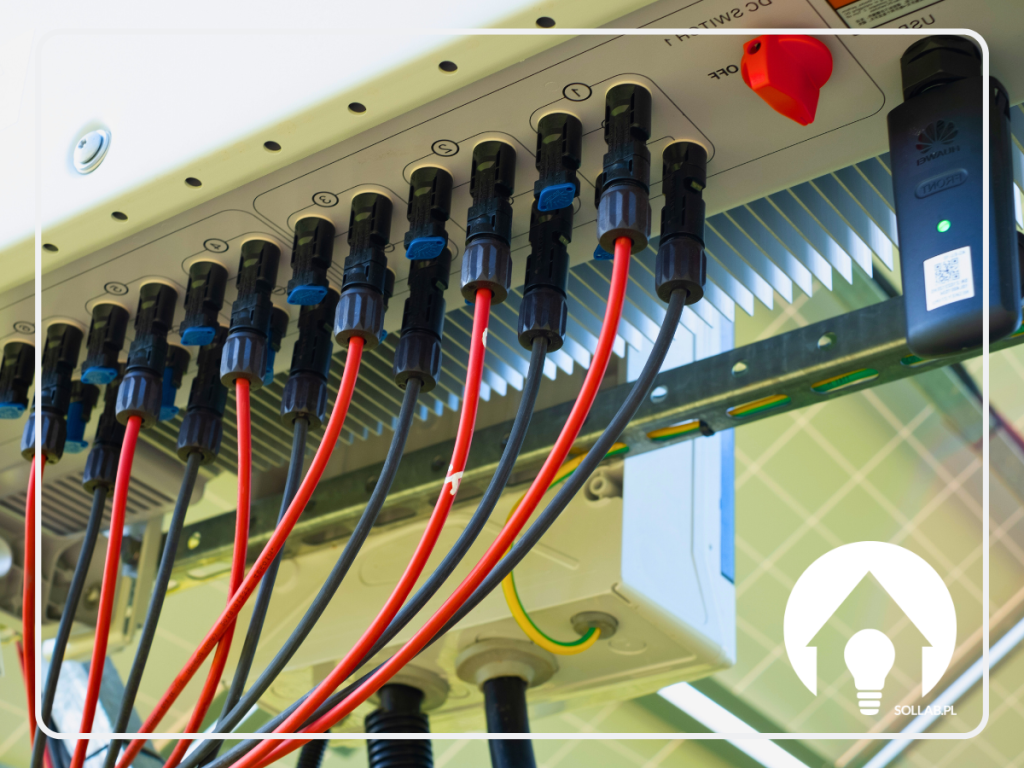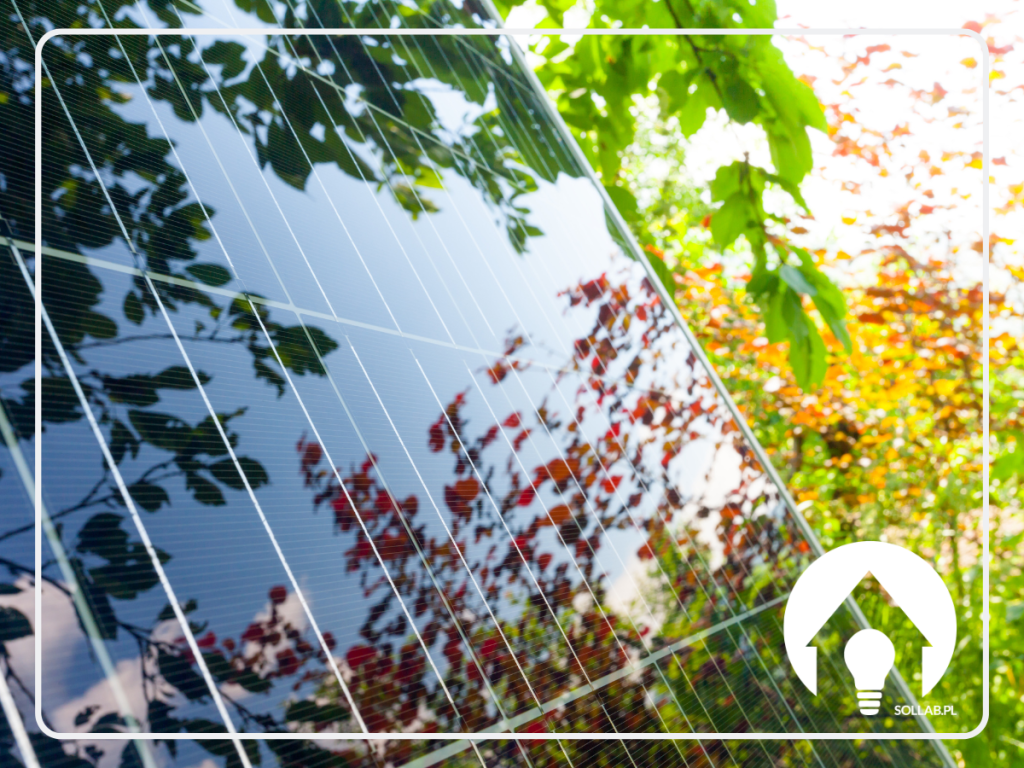The most common and popular type of solar cell is made of monocrystalline silicon solar cells. However, there are different models, which we refer to as photovoltaics. Pomerania is one of the provinces where solar panels are appearing more and more frequently.
Monocrystalline photovoltaic solar panels
They are more efficient, but also more expensive. Their efficiencies are usually in the range 14-19%. They are obtained by casting high-purity silicon crystals in which the alloy solidifies on contact with the crystal embryo. During the cooling process, the silicon gradually solidifies into a cylindrical casting of a single crystal with a diameter of 13 - 20 cm, which can be up to 200 cm long. The resulting ingot is cut into sheets 250 - 300 µm thick. Such elements have a higher efficiency compared to those produced by other methods, with efficiencies of up to 19%, due to the special orientation of the atoms of the single crystal, which contributes to increased electron mobility. Silicon penetrates the metal electrode grid. Traditionally, monocrystalline modules are placed in an aluminium frame and covered with shockproof glass. Monocrystalline photocells are dark blue or black in colour. The solar panels are reliable, durable (up to 50 years lifespan) and easy to install as they contain no moving parts. Solar panels can be used where the conventional power supply is weak and there are many sunny days.
Solar cells made of multicrystalline silicon
Multicrystalline silicon is much easier to produce than monocrystalline silicon. As a material, multicrystalline silicon consists of randomly arranged different crystalline silicon lattices (lifetime 25 years, efficiency up to 15%). This is slightly cheaper photovoltaics. Gdansk is the place where we can order panels of this type. An alternative to monocrystalline silicon is polycrystalline silicon. It has a lower price. The crystals in it are still aggregates, but have different shapes and orientations. This material has a light blue colour compared to dark monocrystals. Improvements in the production process of elements of this type now make it possible to obtain elements whose electrical properties are only slightly inferior to a single crystal.
Thin-film batteries
Thin-film technologies allow the panel to be made cheaper in terms of production costs. This circumstance makes film panels more attractive for the construction of large-scale 'farms' for generating electricity from sunlight, when we are limited not so much by the area of land but by the cost of installing the batteries. Installation is possible not only on the roof, but also on the sides of the building. This is mass photovoltaics. Gdynia is one of those places where the installation of thin-film batteries is becoming increasingly common.
Thin-film panels do not require direct sunlight and work with diffuse radiation, resulting in a total power generated per year that is 10-15% greater than that produced by traditional crystalline solar panels. Thin film is a much more cost-effective method of energy production and can beat monocrystals in areas with foggy, cloudy climates or in industries with high dust or other particulate content. This is efficient and industrial photovoltaics. The Tricity is one of the better-sunned cities in Poland, but thin-film panels are also used here.

















